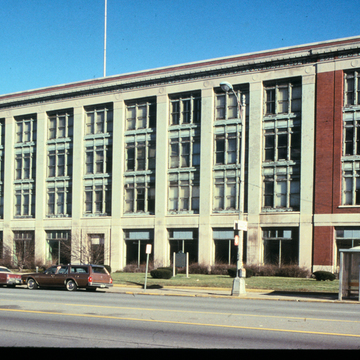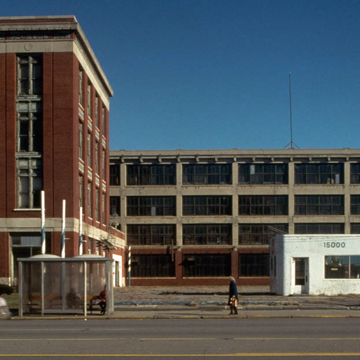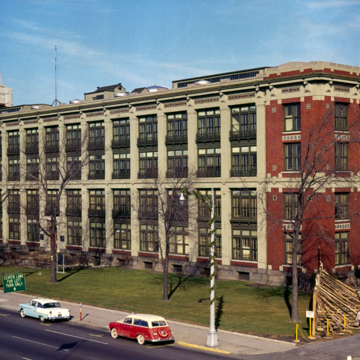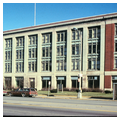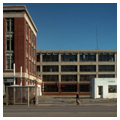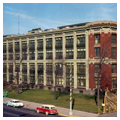The Ford Highland Park Plant was the first large automobile manufacturing complex in Detroit, the birthplace of mass production on a continuous moving assembly line that revolutionized automobile production and made Ford the largest automobile manufacturer in the world. At the Piquette factory ( WN74) in 1908–1909, before moving to the Highland Park plant, the first twelve thousand Model Ts were built. Eventually, over nineteen years, more than fifteen million Model Ts were sold. Here the world's record for car production was achieved establishing American dominance and expertise in automobile manufacturing.
This plant achieved further distinction as Kahn's first monumental factory complex. The thirty-acre site contained two office buildings and a powerhouse fronting on Woodward Avenue; several large, four-story, reinforced-concrete assembly buildings running parallel with Woodward Avenue; two six-story buildings of similar design extending along Manchester Avenue; and sprawling, one-story, steel-framed shops in the rear of the complex. About two-thirds of the original buildings are extant. In his design of the administration building Kahn used the same reinforced-concrete technique that he used in the design of the utilitarian buildings. In 1917 construction on the River Rouge plant ( WN134) began. The Highland Park plant is a National Historic Landmark.


